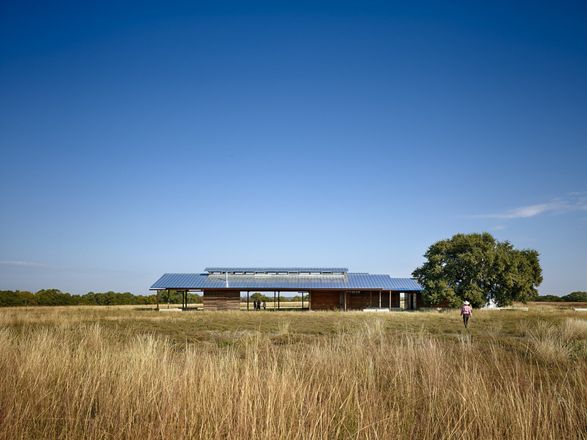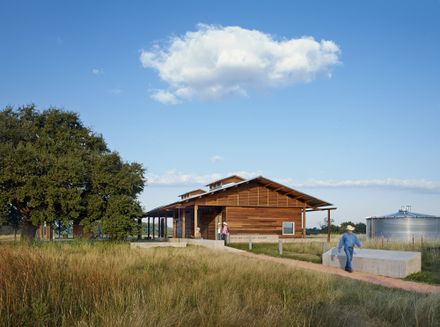
Dixon Water Foundation Josey Pavilion
ARCHITECTS
Lake | Flato Architects
MEP ENGINEER
Tlc Engineering For Architecture
STRUCTURAL ENGINEER
Datum Engineers
MANUFACTURERS
Big Ass Fans, Owens Corning, American Clay, Assa Abloy, Corian® Design, Dupont, Elkay, Fronius, Grace, Nucor Steel, Ram Windows, Ucs Forest Group, Zurn, American Gypsum, Amphenol, Atlas Tube, Gemini, Gerdau Corsa, Hanson Aggregates, Headwaters, +10
DESIGN TEAM
Robert Harris, Tenna Florian, Corey Squire, Jacqueline Fisher, Cotton Estes, Hellen Awino
YEAR
2014
LOCATION
Decatur, United States
CATEGORY
Pavilion
Text description provided by architect.
With aspirations to be the first Living Building project in Texas, this 5,400-square-foot open-air pavilion is an education and meeting center that serves as a demonstration site for the Dixon Water Foundation.
The project physically embodies their mission to promote healthy watersheds through sustainable land management, ensuring the preservation of our water resources.
The building’s simple, low lying forms speak to the surrounding native prairie as the pavilion works in concert with nature. The complex consists of two similarly scaled buildings connected by a shady porch; one includes a herbarium, restroom and kitchen, while the other houses a multi-purpose space for education events.
Designed to be flexible and adapt to climatic conditions year round, the structure captures cool breezes in summer and blocks cold winter winds. The structure’s deep overhangs and existing heritage Live Oak provide shade and shelter in the central gathering space.
Gapped wood doors can be opened to allow maximum ventilation through the central gathering space and along the porches. The rooftop cupola provides daylight for the central pavilion while also drawing hot air out.
Designed as a fully restorative Living Building, the project represents the most advanced measure of sustainability in the built environment. 100% of wastewater is treated onsite and returned to the natural water cycle.
At least 100% of the energy used is produced by solar panels and testing has confirmed that indoor air quality is almost indistinguishable from surrounding outdoor fresh air. Only building materials that have a low environmental impact and no adverse effects to human health were used in the entire project.
Natural materials and human scaled spaces create a tranquil environment that connects people with the landscape in a holistic, non-intrusive way that supports the Foundation’s mission.

















